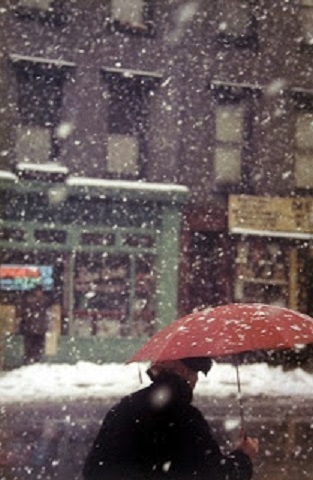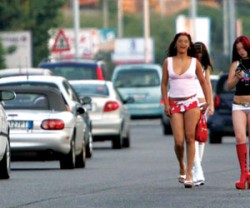 In the last couple of weeks, on twitter, I tore into a piece of research funded by the US National Institute of Justice entitled Estimating the Size and Structure of the Underground Commercial Sex Economy in Eight Major US Cities. During that time every media outlet in the world reproduced the claimed findings as if they were facts, despite how ridiculous most of them are. I made a few punchy points in an interview:
In the last couple of weeks, on twitter, I tore into a piece of research funded by the US National Institute of Justice entitled Estimating the Size and Structure of the Underground Commercial Sex Economy in Eight Major US Cities. During that time every media outlet in the world reproduced the claimed findings as if they were facts, despite how ridiculous most of them are. I made a few punchy points in an interview:
Q+A: Why Pimps Can’t Be Trusted to Talk About Sex Economics
Lauretta Charlton, Complex City Guide, 17 March 2014
Last week, the Urban Institute released a landmark study called Estimating the Size and Structure of the Underground Commercial Sex Economy in Eight Major US Cities. Its abstract states that “the underground commercial sex economy (UCSE) generates millions of dollars annually, yet investigation and data collection remain under resourced.”
The Institute’s research was focused on gathering information about the sex economy based on evidence in eight major cities across the US. The research relied heavily on interviews with pimps, traffickers, sex workers, child pornographers, and police. According to a quick recap of the study on the Urban Institute’s website, the major findings include:
- Pimps claimed inaccuracy in media portrayals.
- Pimps manipulate women into sex work.
- Women, family, and friends facilitate entry into sex work.
- Unexpected parties benefit from the commercial sex economy.
- The Internet is changing the limitations of the trade.
- Child pornography is escalating.
- The underground sex economy is perceived as low risk.
But critics say that the study is misleading and intentionally biased. It’s an oversimplification of what researchers like Laura Agustín, also known as the Naked Anthropologist, argue is a very complicated system. City Guide asked Agustín a few questions via email hoping to get a clearer picture.
In your words, how has this study misrepresented sex workers in America?
LA: It’s not a study about sex workers at all but rather an attempt to view particular sex economies through the highly limited lens offered by of convicted ‘pimps’. The study was designed in a way that assured bias from the start. Women who sell sex are seen as objects manipulated by Bad Men. There’s next to no information about sex workers.
The interview subjects were mostly black/minorities. How is this reflection of continued racism in America?
LA: Again, the bias was guaranteed when researchers chose to centre pimps, but the only pimps they could conveniently interview are incarcerated. Black men predominate in prisons and predominate in the kind of pimping researchers know about, so the study reproduces the usual racist idea that black men pimp white women. This then is made to seem to be the most important aspect of the sex industry, which is laughable.
How have reports of the study misconstrued the real issues at hand?
LA: Media reports uncritically accept and focus on the numbers provided in this study: which city has the biggest sex or drugs economy, how much money pimps earn. I haven’t seen any reporter ask why researchers accepted prisoners’ stories as fact. All interview research has to factor in the possibility that subjects lie; in this case that factor is very big indeed as prisoners can be expected to brag about their exploits.
Do you believe the issues of race and sex work are mutually exclusive?
LA: I’m not sure what you mean. People the world over take up sex work for thousands of reasons and are pulled into or attracted to it by their positions vis-à-vis class, race, ethnicity, gender. No single condition decrees how a sex worker will fare; to understand any individual you need to listen to their story.
Analyze this quote from the study, “They have a saying in the pimp game, ‘If it ain’t white, it ain’t right. If it ain’t snowing, I ain’t going.”
LA: Analyse? I’d say that’s a typical cocky man’s comment aimed at showing how in-control he is. Perhaps a black man said it to a white woman? In which case he was ‘snowing’ her.
***
Next Huffington Post Live did a brief show with four panelists using Google Hangout. The technology allows participants to interact verbally, but there’s no eye contact, which limits things. This was called Understanding The Modern Sex Work Industry
Most of the critical commentary after this event centred on Dennis Hof’s screwy comments about unregulated sex workers’ having AIDS and being sex-trafficked, as he single-mindedly promotes the model of commercial sex he understands – his own Nevada brothels. More to the point, the show was meant to be about the Urban Institute study, but I doubt Hof ever even looked at it. This meant the already brief show lost focus. Still, because of twitter this small critique took place, which is a good thing.
Someone would have to pay me to write up a real critique of the Urban Institute study. The bottom line is researchers were funded by a crime-oriented agency to confirm everything the US government already does. Even sell-out researchers could not find the kind of horrible connexions between sex-drugs-weapons they wanted, but they admitted the possibility that things could be much worse than study shows (the Weapons of Mass Destruction ploy). I can imagine the study’s results leading to proposal for national-US antiprostitution law – ‘to facilitate policing’. Here’s a selection of tweets from 12-20 March 2014 (from @LauraAgustin). More like raw data, in no special order, hashtags removed.
“Estimating the Size and Structure of the Underground Commercial Sex Economy in 8 Major US Cities” Ludicrously banal
Urban Institute report on US sex economy is obsessed with pimps. In fact the report is about pimping, not the sex industry, not sexwork
This will become the Bible for End Demand. pimps are their sole interest.
Today news items worldwide shout about a badly biased US govt-funded study of pimping. Bad Men- what everyone loves
Headlines include “US pimps can pull in $33 000 a week” & “Street Gangs Deeply Involved In Commercial Sex Trade”. No sexworkers visible.
“Commercial sex trade widely segmented, the report found” Really? They call this study a first but it’s the last to say the most basic stuff.
“The focus is through the lens of imprisoned pimps & traffickers & those who put them behind bars” Barefaced bias that should be dismissed. Read the rest of this entry »













































